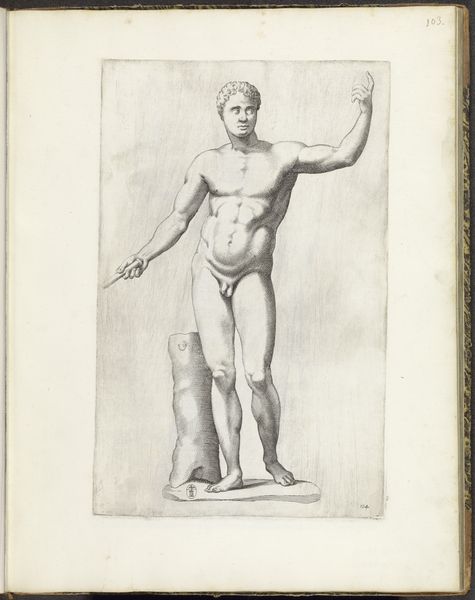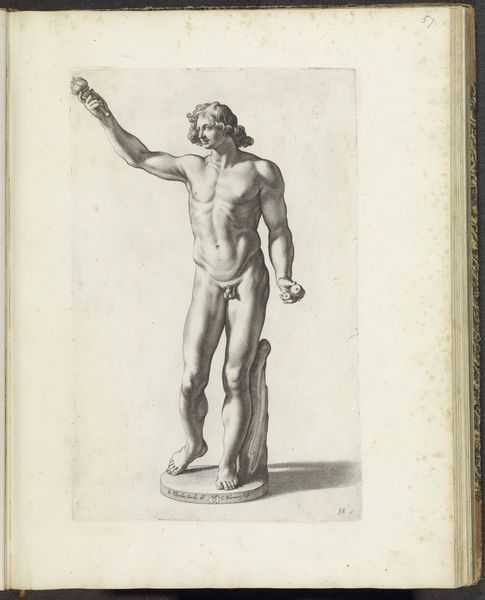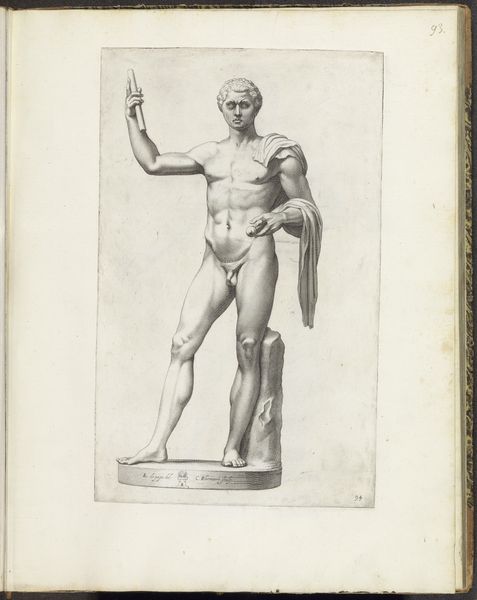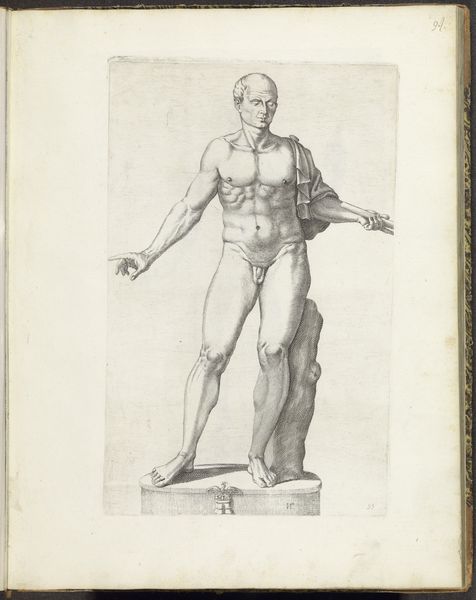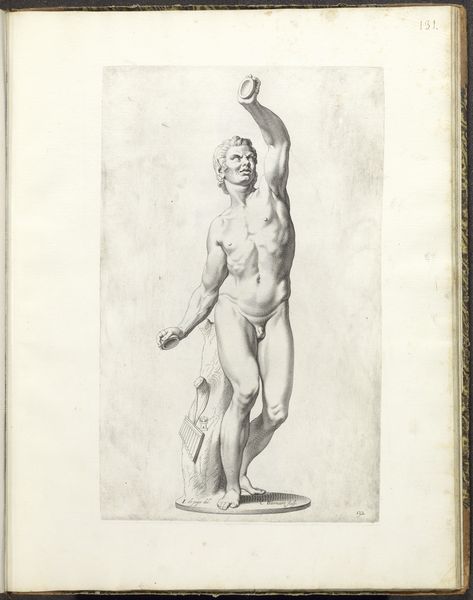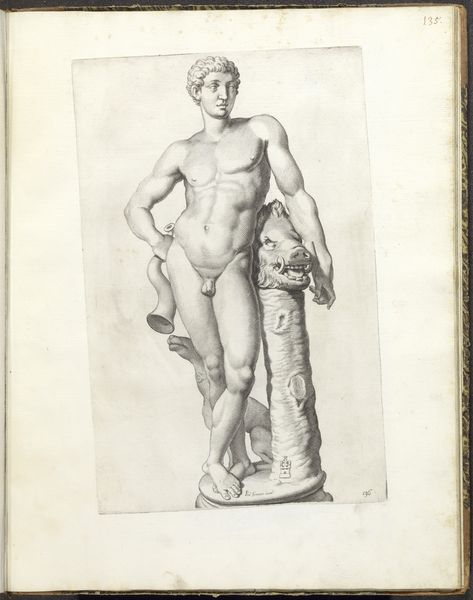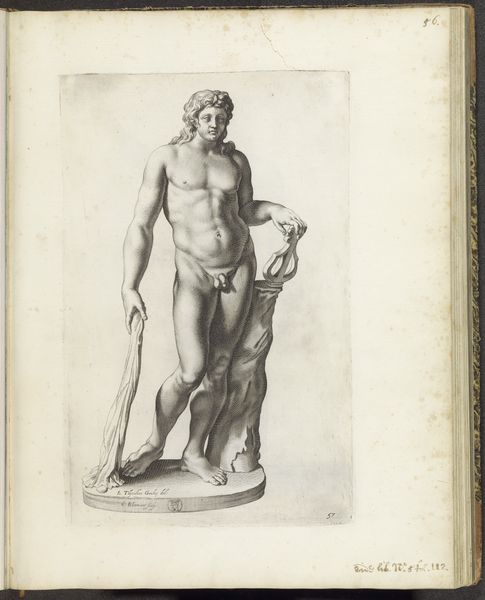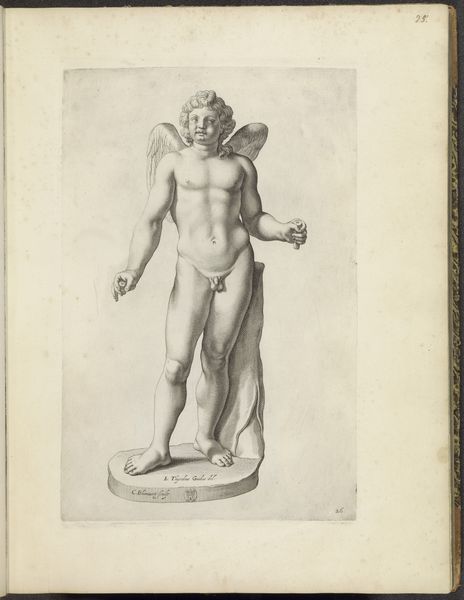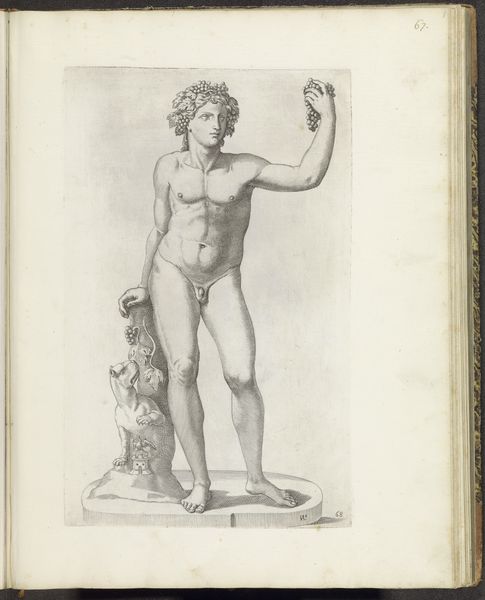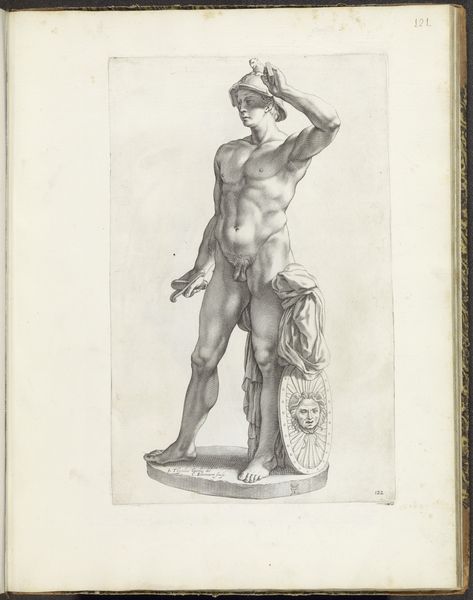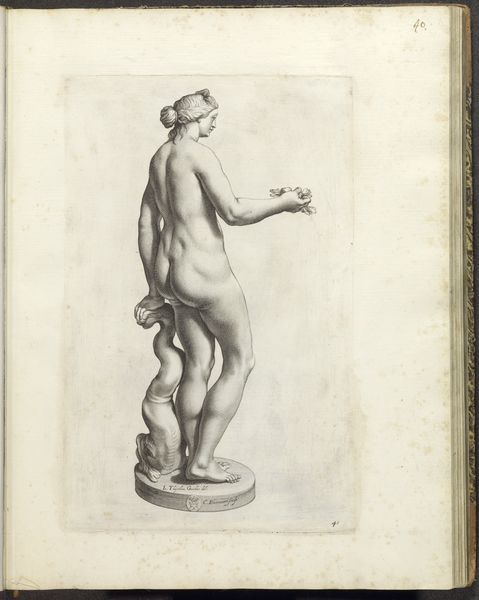
print, etching, engraving
#
baroque
# print
#
etching
#
classical-realism
#
figuration
#
history-painting
#
nude
#
engraving
Dimensions: height 371 mm, width 233 mm
Copyright: Rijks Museum: Open Domain
Cornelis Bloemaert made this drawing of the “Statue of Caesar Augustus” at an unknown date. The texture, achieved through intricate linework, presents a compelling figure study. The structure of the composition emphasizes the human form against a muted background. Bloemaert’s technique masterfully employs light and shadow to sculpt depth and volume, particularly noticeable in the rendering of musculature. This use of chiaroscuro not only enhances the statue’s realism but also invites a reading of the subject’s power and authority. We can consider how the statue's form, frozen in permanence, interacts with its historical symbolism. Augustus, depicted with detailed precision, signifies more than just an individual; he represents the very essence of imperial order and Roman virtue. Consider how Bloemaert uses formal elements to convey meaning. The statue of Augustus offers a lens through which we can contemplate themes of power, representation, and cultural memory.
Comments
No comments
Be the first to comment and join the conversation on the ultimate creative platform.
